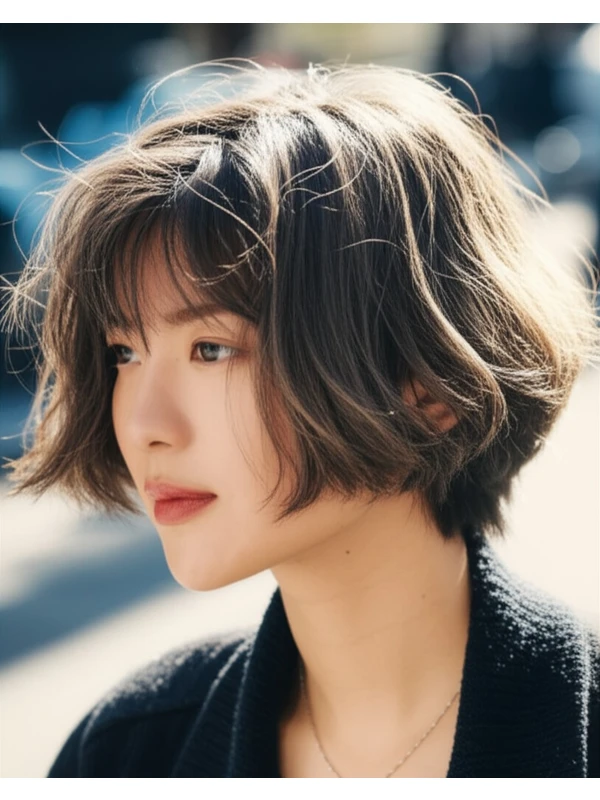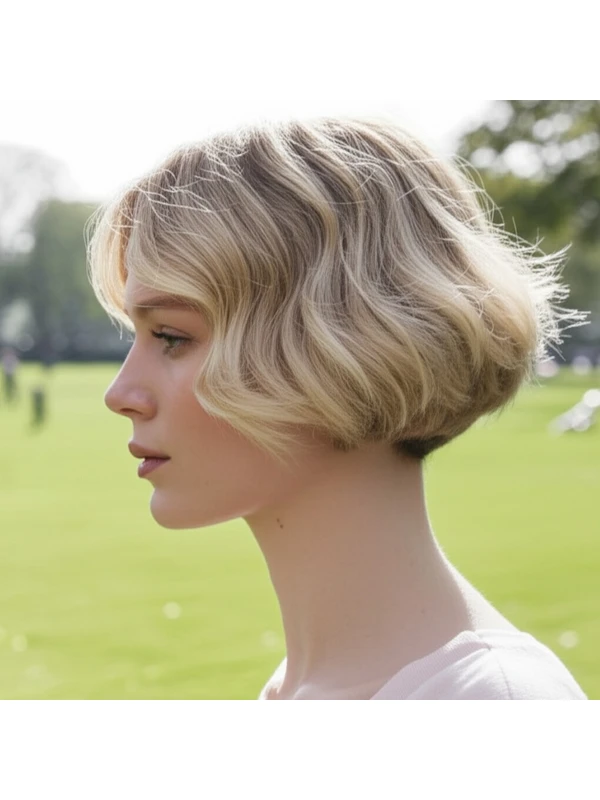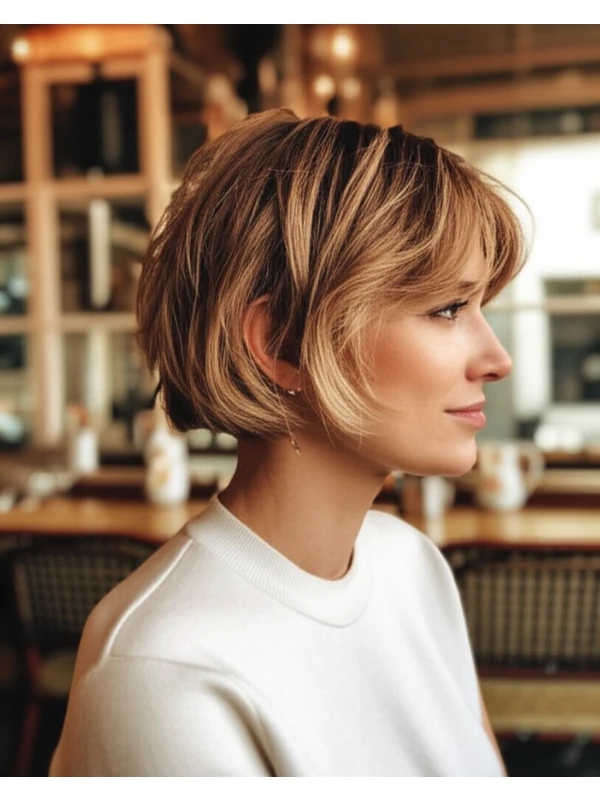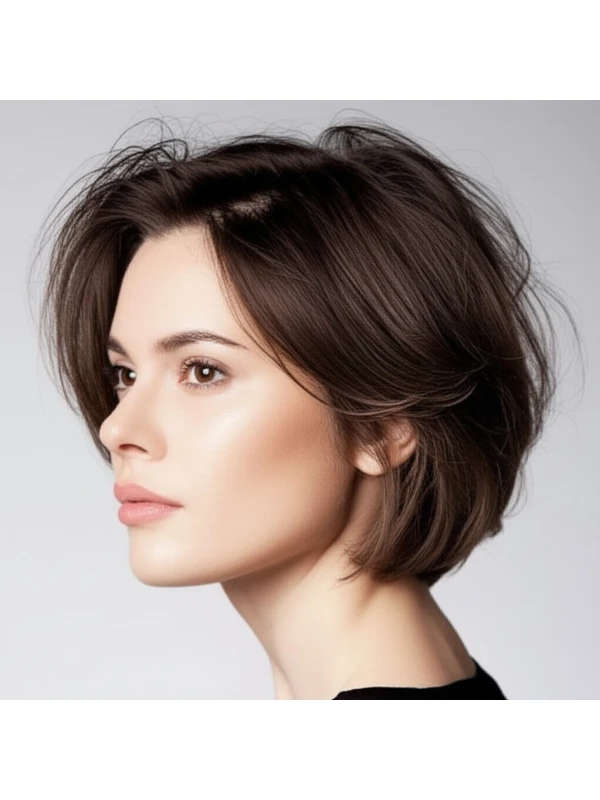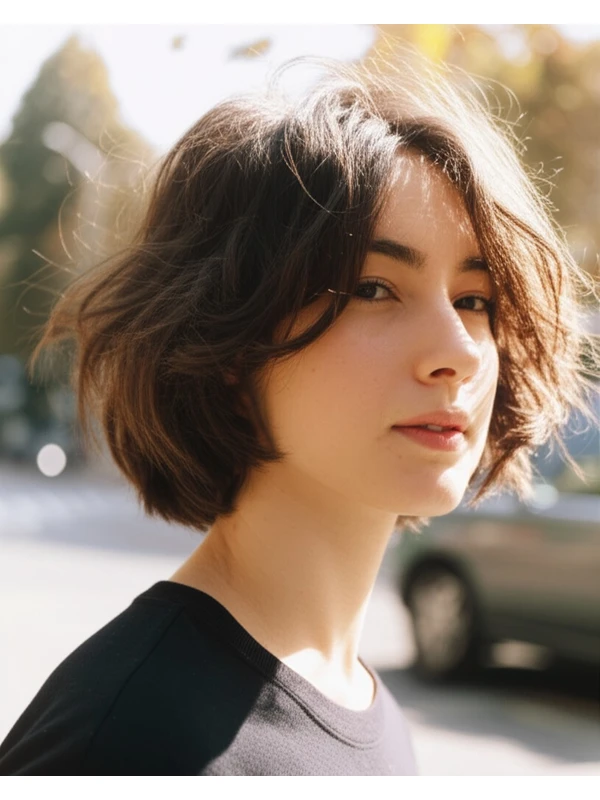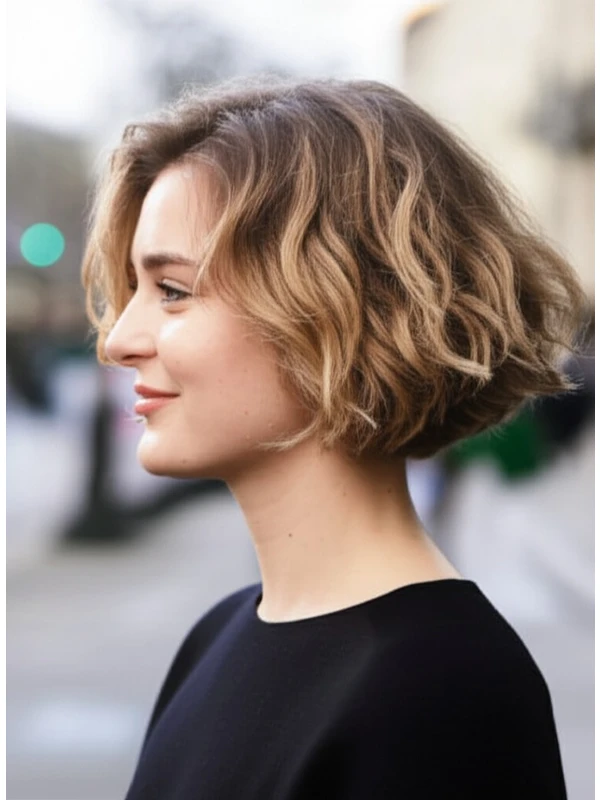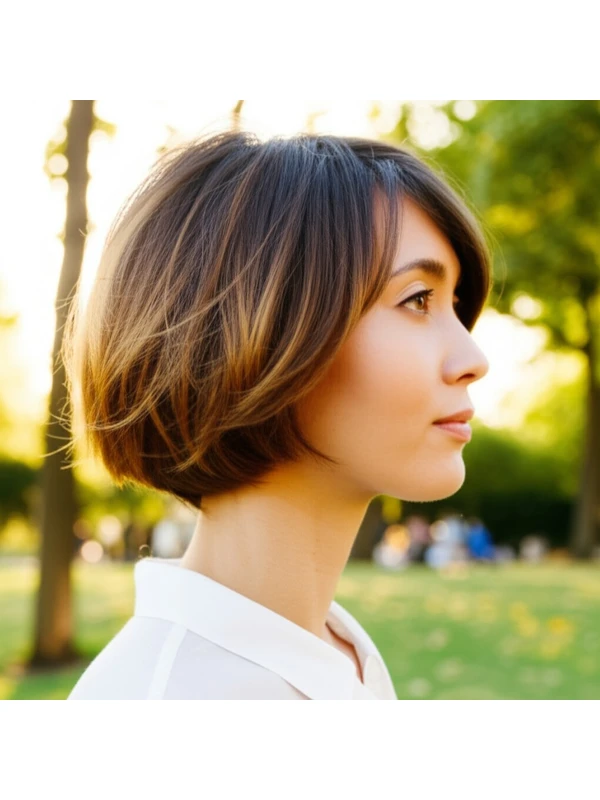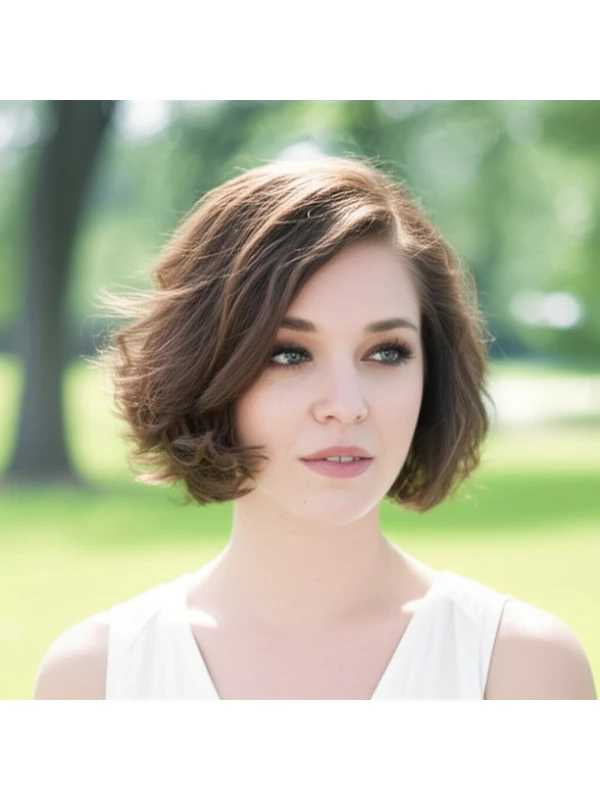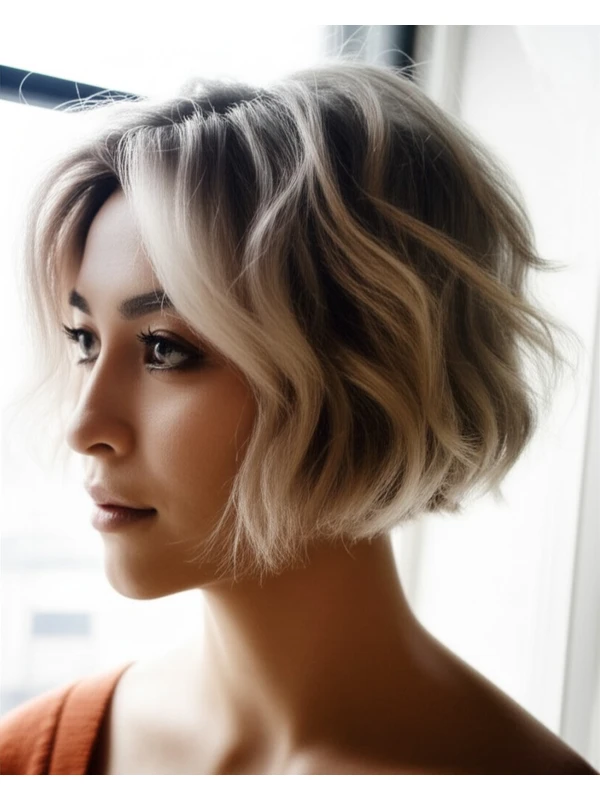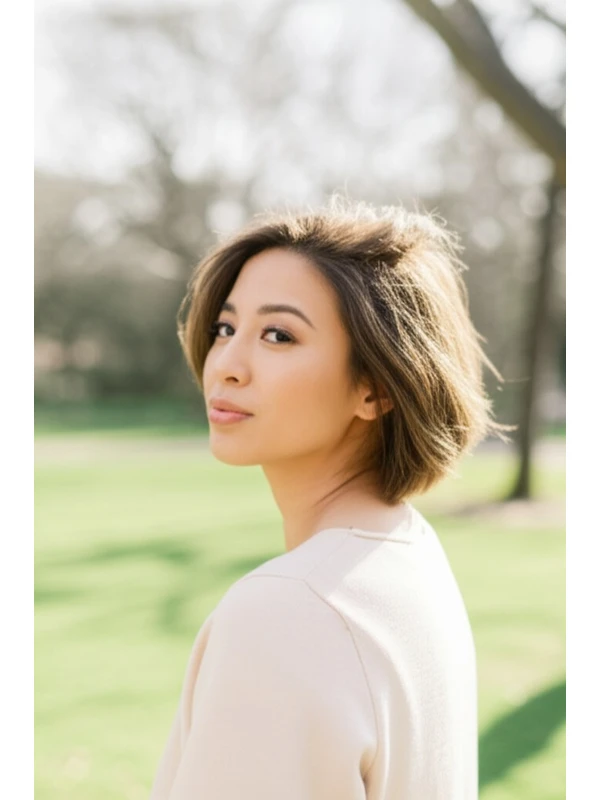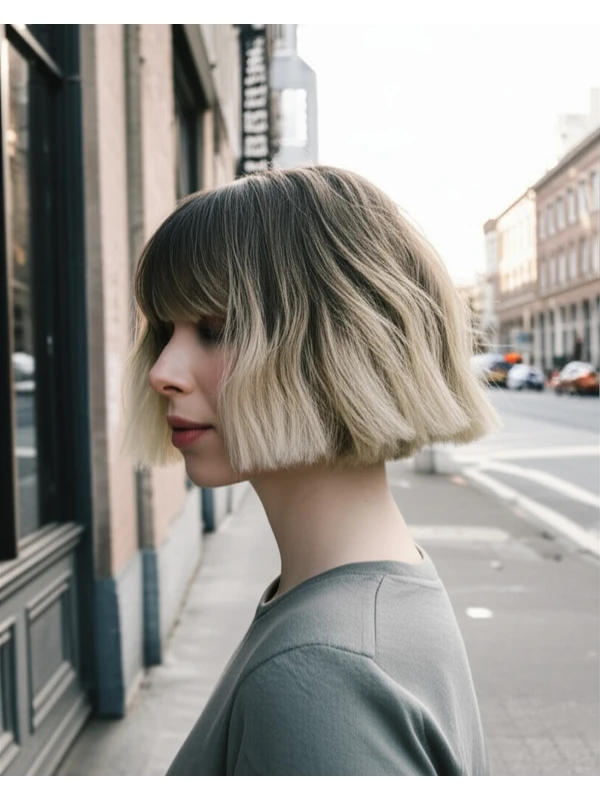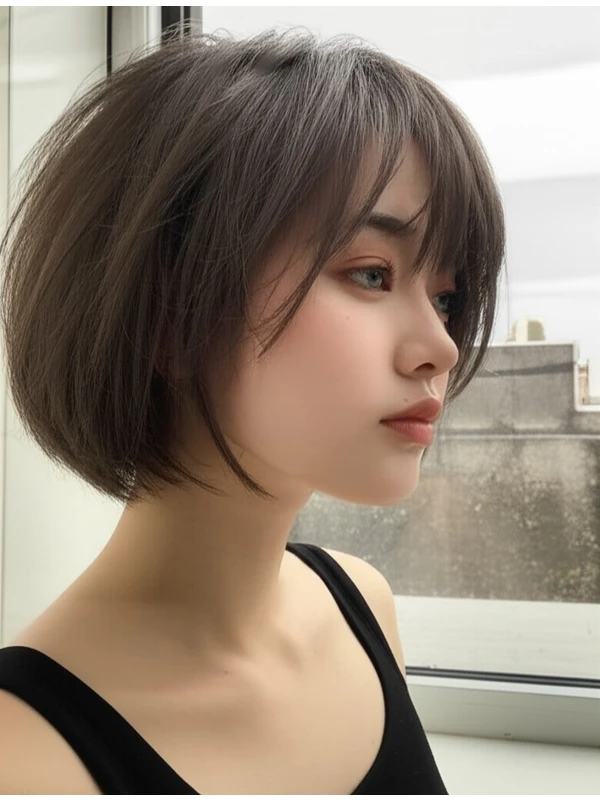#The Parisian Bob: Effortless Chic for Every Face & Hair Type
The Parisian bob is more than just a haircut; it’s an attitude – one of understated elegance, effortless cool, and timeless style. Inspired by the classic French aesthetic, this cut has seen countless iterations over decades, remaining perpetually chic. Let's dive into everything you need to know about embracing this iconic look.
#1) Background & Definition: What is a Parisian Bob?
The Parisian bob isn’t just one thing; it's a family of cuts united by certain key characteristics. Think Audrey Hepburn in Sabrina, but with room for modern interpretation.
- Geometry: It's generally a blunt, one-length or slightly layered cut that falls somewhere between the chin and jawline. The back is often shorter than the front, creating subtle movement.
- Key Features: The emphasis is on clean lines, simplicity, and a natural shape. It’s meant to look intentionally undone – like you woke up looking this good!
- Length Ranges: Typically hits between 3-7 inches below the chin. Variations exist; some versions are shorter ("micro bob"), while others extend closer to the shoulders.
- Alternative Names: French Bob, Blunt Bob (though a blunt bob isn't always Parisian), Chin Length Bob.
#2) Face Shape Fit: Finding Your Perfect Angle
The beauty of the Parisian bob is its adaptability, but certain adjustments can maximize its flattering effect for different face shapes.
- Oval: Lucky you! An oval face suits almost any length and variation of the Parisian bob beautifully. A simple blunt cut or soft layers work wonders. Consider a side part to add asymmetry.
- Fringe Options: Curtain bangs, wispy bangs, or no fringe at all – it's your choice!
- Round: Adding height is key for round faces. Opt for a slightly angled bob (longer in the front) and consider subtle layers around the cheekbones to slim the face. Avoid blunt cuts that accentuate width.
- Fringe Options: Side-swept bangs can help break up a roundness; avoid full, straight-across fringes.
- Square: Soften those angles! A Parisian bob with soft layering and a slightly rounded shape will balance a square jawline. Avoid sharp lines that mirror the face's structure.
- Fringe Options: Curtain bangs or longer, softer fringe can soften the appearance of strong features.
- Heart: Volume at the chin helps create balance for heart-shaped faces (wider forehead, narrower chin). A slightly layered bob with a side part works well.
- Fringe Options: Wispy or feathered bangs that don’t add too much width to the forehead are ideal.
- Diamond: Similar to heart shapes, diamond faces benefit from softening angles and adding volume at the jawline. A slightly layered bob with a side part is flattering.
- Fringe Options: Side-swept bangs or curtain bangs can soften the angles of your face.
- Oblong (Long): Shortening the face is the goal here! A chin-length bob, potentially with more volume at the crown, will create a more balanced look. Avoid styles that elongate the face further.
- Fringe Options: A blunt fringe can help shorten an oblong face; consider a longer, softer version rather than a micro-fringe.
#3) Body Proportions & Height Guidance: Tailoring to Your Silhouette
The Parisian bob isn’t just about your face – it needs to complement your overall body shape and height too!
- Petite: A shorter, chin-length bob can make the neck appear longer and avoid overwhelming a smaller frame.
- Average: Most lengths work well for average heights; experiment with layering or fringe to personalize the style.
- Tall: A slightly longer Parisian bob (closer to shoulder length) can help balance height. Adding volume at the crown will also prevent looking too elongated.
- Narrow Shoulders: A layered bob, especially with face-framing pieces, adds visual width and balances narrow shoulders.
- Broad Shoulders: Keep the cut relatively simple and avoid excessive layering that could add unnecessary bulk to the shoulders.
- Long Neck: Consider a slightly longer bob or adding layers around the jawline to visually shorten the neck.
#4) Works Best With Hair Types & Densities: Adapting for Your Texture
The Parisian bob is versatile, but adjustments are needed depending on your hair type and density.
- Straight Hair: The classic canvas! A blunt cut will showcase clean lines beautifully.
- Wavy Hair: Embrace the natural texture with subtle layering to prevent bulkiness. Air-drying or diffusing can enhance the waves.
- Curly/Coily Hair: This requires careful consideration of shrinkage. Consult your stylist about cutting length longer than you expect, accounting for curl pattern and density. Layering is crucial to avoid a triangular shape.
- Shrinkage Tip: What looks chin-length when dry may be significantly shorter when wet or fully stretched. Communicate this clearly with your stylist!
- Fine Hair: Blunt cuts can make fine hair look thicker, but too much weight can drag it down. Face-framing layers add movement and volume.
- Medium/Thick Hair: Layering is essential to remove bulk and create shape.
- Density Tip: If you have very dense hair, thinning shears might be used during the cut to reduce overall thickness without sacrificing length.
#5) Styling Variations: From Sleek to Textured
The Parisian bob’s beauty lies in its adaptability – here are a few styling options:
- Sleek vs. Textured: A sleek bob uses heat tools (straightener) for a polished look. A textured bob embraces natural waves or curls, often air-dried with minimal product.
- Middle vs. Side Part: A middle part creates symmetry and balance; a side part adds softness and asymmetry.
- Fringe Variations: Blunt bangs, wispy bangs, curtain bangs – the possibilities are endless! Consider your face shape and hair texture when choosing a fringe style.
- Occasion Styling:
- Casual: Air-dried with texturizing spray for effortless cool.
- Office: Sleek and straight with a polished finish.
- Evening: Add volume at the roots, use shine serum for extra glamour.
#6) Maintenance: Keeping Your Bob Chic
- Trim Cadence: Every 4-8 weeks to maintain shape. Curly/coily hair may need more frequent trims (every 6-10 weeks) due to shrinkage and growth patterns.
- At-Home Routine: Gentle shampoo & conditioner, leave-in conditioner for moisture, heat protectant if using hot tools.
- Heat vs Air Dry: Air drying is ideal for a natural look; heat styling creates sleekness and polish.
- Product Checklist: Shampoo, Conditioner, Leave-In Conditioner (essential!), Heat Protectant (if applicable), Texturizing Spray/Mousse (for texture), Shine Serum (for finishing).
- Estimated Daily Styling Time: 5-20 minutes depending on desired style and hair type.
#7) Grow-Out Roadmap: Evolving Your Look
- Months 1-3: The bob maintains its shape well, with minimal styling adjustments needed.
- Months 3-6: The length starts to grow out. Consider adding subtle layers or a face-framing detail to soften the line. A slight angle can prevent it from looking boxy as it grows longer.
- Maintaining Shape: Between cuts, focus on keeping ends smooth and hydrated with regular conditioning treatments.
#8) Color Pairings: Enhancing Your Bob's Beauty
- Cool Undertones (pink, blue): Ash blonde, cool brown shades.
- Warm Undertones (yellow, gold): Honey blonde, caramel brown, copper highlights.
- Low-Commitment Options: Balayage or root smudge for a blended, natural look that grows out gracefully.
#9) Season & Occasion Guide: Adapting to the Moment
- Spring/Summer: Lighter color palettes and textured styles feel fresh and breezy.
- Fall/Winter: Richer tones (chocolate browns, deep reds) and sleek styling create a cozy vibe.
- Work: Sleek and polished – minimal fuss.
- Weddings/Parties: Add volume, texture, or subtle highlights for extra sparkle!
- Formal Events: Consider an updo or half-up style to showcase the neckline.
#10) Cost & Time: Salon Investment
- Salon Time: Typically 45 minutes - 1.5 hours (can be longer with color).
- Estimated Price Range: Moderate – higher than a simple trim, but generally less expensive than more complex styles.
#11) Pros & Cons: Weighing the Options
Pros: Timeless style, versatile, relatively low-maintenance (with proper care), flattering on many face shapes. Cons: Requires regular trims to maintain shape, can look harsh with blunt lines if not styled correctly, may require more product for certain hair types.
#12) Salon Consultation Script: Your Questions Answered
Use these prompts when discussing your Parisian bob goals with your stylist:
- "I'm interested in a Parisian bob – what length would you recommend based on my face shape and hair type?"
- “How can we incorporate layers to work with my [hair texture - wavy, curly, etc.]?”
- “What fringe options would be most flattering for my face shape? Can we see some examples?”
- "Can you show me how to style the bob at home and recommend products?"
- "How often will I need trims to maintain the shape of this cut?"
#FAQs: Your Burning Questions
- Is a Parisian bob suitable for fine hair? Yes, but layering is key to avoid it looking flat.
- Can I get a Parisian bob with curly hair? Absolutely! It requires careful cutting and styling techniques to manage shrinkage and maintain shape.
- How long does it take to grow out a Parisian bob? Length varies, but expect at least 6-12 months for significant growth.
- Can I do the Parisian bob myself? While possible, professional expertise is recommended for best results, especially with layered cuts or fringe.
- What if I don't like blunt lines? Soften the edges with subtle point cutting to create a more diffused look.
- Will a Parisian bob make my face look wider? Not necessarily! Strategic layering and styling can actually slim the face, depending on your features.
